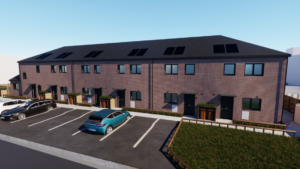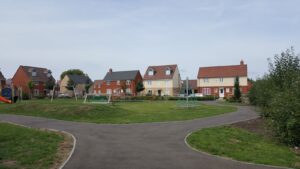The challenges of purpose-built student accomodation (PBSA)
Purpose-built student accommodation (PBSA) should provide an invaluable resource to the higher education institution (HEI) it intends to serve, and also support students by providing a safe and secure environment that is located close to lectures and local amenities, Neal Allcock, partner at Carter Jonas outlines some of the challenges faced by this sector.
The situation, following the global pandemic over the last twelve months, has been unprecedented and has demonstrated the value of high-quality student accommodation.
Research suggests that, in comparison to the house in multiple occupation (HMO) rental market, the PBSA sector has handled the challenges that Covid-19 has presented in a more effective way. This highlights the benefits of PBSA as professionally managed, high-quality purpose-built housing, compared to the traditional ‘student house share’ model of an HMO.
As a result of the Covid-19 pandemic, we have also seen a considerable increase in online learning, which could result in student’s attitudes towards accommodation changing. If the future is a blend of online and in-person tutoring, more time would be spent in student accommodation.
Historically, poorer quality PBSA from past years, or traditional HMOs, have created many negative perceptions of the sector, which the development industry has found hard to shake off.
With tuition fees up to £9,250 per annum for domestic students and potentially up to an eye-watering £38,000 per annum for international students, PBSA providers continue to evolve their product to respond to the needs of more discerning students. Providers are often also acutely aware of local community concerns.
There remains apprehension for many local communities, with the ‘town vs. gown’ argument playing out on local and site-specific problems, for example, scale and design; amenity issues such as parking; inclusivity and affordability; and wider pressures on the local housing market.

Arguably, repurposing student HMOs could reduce demand on existing housing stock. Yet, it is unclear whether local landlords would be happy to convert their properties back into family accommodation, alternatively, they may look to move into other sectors to fill their bed spaces.
The growth in student numbers, already seen from UCAS, follows countercyclical economic trends where student numbers increase rapidly when employment opportunities are scarcer. This makes the need for high-quality PBSA even more pressing over coming years as the UK battles through both the fallout of Brexit and the COVID-19 pandemic.
The provision of PBSA could enable the re-purposing of existing HMOs to reduce demand on existing housing stock in many of the UK’s city centres.
Whilst the argument is often put forward that student accommodation could be converted back into family housing, HMO landlords may find it more economical to maintain their HMO portfolio and choose to provide accommodation beyond the student market.
For example, they could look to offer temporary housing for people with more complex needs. There are no planning mechanisms to control this process, which could cause greater concern to local residents and is a symptom of a wider lack of affordable and specialist housing provision.
Locational factors often form a key plank in planning policies for PBSA. Reading’s established PBSA policy, restricting PBSA to sites either on or adjacent to campus, was tested at appeal in November 2020. The dismissal of this appeal for a site already allocated for residential development, despite the inspector confirming the need for PBSA, effectively further endorses the restrictive sequential site policy for PBSA adopted by the council.
Leicester City Council’s current draft Local Plan looks to encourage PBSA in sustainable locations close to HEIs in the city, but not within areas which have Article 4 restrictions in place preventing changes of use from dwellings to small HMOs. On the face of it, this appears counterintuitive, as the Article 4 locations are close to both Leicester and De Montfort universities and well-managed PBSA.
What is clear from just these two examples is that the PBSA development community should provide more of an active voice in shaping the development plan documents, so that the positives associated with PBSA are clearly balanced by an inspector in adopting new development plans.
Each Local Planning Authority (LPA) that has a large university presence must wrestle with these pressures, which in some instances have resulted in several draconian planning policies.
Photo by Bench Accounting















